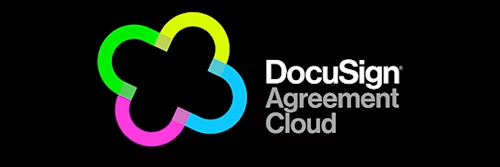
How Brian Frank Transformed LinkedIn’s Sales Team into a $6 Billion Behemoth
Brian Frank shares 3 key strategies on how LinkedIn managed to transform their sales process for better ROI.

By Akshay Kerkar, Director of Product Marketing, Docusign
Brian Frank never thought about a career in sales. In fact, his first job fulfilled a childhood dream: to become an environmental lawyer. But Frank was a lawyer who thought about more than just the law.
“I found that I was interested in business ideas as much as legal theory,” he says. “I tended to have one foot in law and another foot in other businesses.”
Prior to his role as Vice President of Global Operations at LinkedIn, Frank worked at software company Ariba, where he started as a lawyer reviewing sales contracts. He later moved into positions in finance, channels, real estate, and, finally, sales.
Sales was a natural fit, but it wasn’t easy. Before joining LinkedIn, in his effort to build pipeline, Frank was suspended from LinkedIn for sending prospecting InMails to people he didn’t know. At the time, he didn’t realise it was against LinkedIn policy. However, LinkedIn would ultimately save his sales career: in 2008 he joined the company and helped grow the sales team from 15 people and $75 million in revenue to more than 5,000 people and $6 billion in revenue in 2018.
Frank’s curiosity and diverse experience were key in helping LinkedIn become the successful company it is today. We spoke to Frank, the first member of the Docusign’s Advisory Board, about how his outside perspective helped create a powerful sales team at LinkedIn.
Here are Frank’s three big strategies for sales leaders looking to grow their teams now and into the future:
1. Build your sales team for the next 100 years
Frank’s first directive at LinkedIn was to build a sales organisation for the next 100 years. But how do you build a vision that far out for a function that is changing rapidly?
“If you are going to build a sales organisation for the next 100 years, it needs to be about the culture because people and jobs and responsibilities don’t last 100 years,” Frank says. “The only thing that’s permanent is what you pass on from generation to generation, in the way people feel about the company, in the way people operate and make decisions.”
Having worked alongside sales organisations at prior companies, Frank knew he didn’t want to build a traditional B2B sales culture. And knowing culture was a core pillar of the sales organisation’s long-term success, his approach was to connect sales to the rest of the company.
“Since we were starting a new sales organisation at LinkedIn, we didn’t want to build a culture of entitlement,” he says. “We wanted to build a culture where sales was a leader culturally for everybody and were inclusive and brought everyone into the story.”
2. Be your own recruiter
Sales executives often say that people are their most important resource. Yet hiring is usually delegated to people or agencies outside of the sales team. Frank thinks that’s a big mistake and a potential competitive disadvantage, especially when hiring senior roles.
“If you’re an executive, you should be spending 10 percent of your time online sourcing talent,” says Frank. “There’s nothing more important you can do for your company than hiring more great people. You’re the best person to sell the company to a prospective candidate and the best recruiter you’ll ever have.”
Not only do sales leaders know their talent best, Frank believes being the recruiter gives them a competitive advantage because most sales execs are naturally averse to recruiting on their own. Plus, the learning curve to sourcing talent is significantly shorter than it used to be. Online tools like LinkedIn mean executives just need to invest a little time learning candidate search strategies (and less time making excuses) to be an effective recruiter.
3. Find logic and meaning in your sales technology adoption
Having both purchased and sold technology for sales teams in his career, Frank understands what technology investments can actually make a difference for salespeople. In a market flooded with products that promise to revolutionise the role, how should sales leaders approach internal technology adoption? First and foremost, Frank says it just needs to make sense.
“You have to make data-driven decisions, but practically, if I can’t get past whether a technology makes sense and will actually be adopted, I’m probably not going to buy it just because there’s so much other stuff out there,” Frank says.
Next, he says it has to be meaningful to the people using it. How do you know if a technology will be meaningful to the team? One of the best ways, Frank says, is to find the products that a critical mass of salespeople have purchased with their own money. At LinkedIn, internal teams noticed salespeople using a virtual presentation software that they had all bought with their own credit cards—so LinkedIn ended up buying the entire company.
“When the users speak with their wallets, that should send a really strong message to leadership that there’s something there,” Frank says.
Docusign was one of the key technologies adopted by the LinkedIn sales team due to Frank prioritising digital contract management: it not only helped deals close faster, but also created a better customer experience and reduced wasted admin time.
While Frank sees sales as an ever-evolving and increasingly automated role, the need for the human element of sales is here to stay. That’s why a strategic focus on culture, recruiting and smart technology adoption will ultimately help differentiate the best sales organisations with staying power decades into the future.
The Docusign Agreement Cloud™ digitally transforms how you do business via contracts and other types of agreements. Choose from more than a dozen applications and more than 350 integrations, covering the entire agreement process—from preparing to signing, acting on, and managing agreements.
Watch this on-demand webinar to learn more about how Docusign can help your sales teams close deals faster and deliver a customer experience.


Related posts
Discover what's new with Docusign IAM or start with eSignature for free


